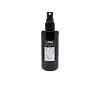What's inside
What's inside
 Key Ingredients
Key Ingredients

 Benefits
Benefits

 Concerns
Concerns

 Ingredients Side-by-side
Ingredients Side-by-side

Water
Skin ConditioningPolyurethane-35
Butylene Glycol
HumectantPvp
Emulsion StabilisingSilica
AbrasivePhenoxyethanol
PreservativeChlorphenesin
AntimicrobialPEG-40 Hydrogenated Castor Oil
EmulsifyingVp/Acrylates/Lauryl Methacrylate Copolymer
Caprylyl Glycol
EmollientNiacinamide
SmoothingRosa Rugosa Flower Water
MaskingAloe Barbadensis Leaf Extract
EmollientSodium Hydroxide
BufferingSodium Hyaluronate
HumectantVitis Vinifera Fruit Extract
Skin ConditioningCamellia Sinensis Leaf Extract
AntimicrobialGlycerin
Humectant1,2-Hexanediol
Skin ConditioningHydroxyacetophenone
AntioxidantWater, Polyurethane-35, Butylene Glycol, Pvp, Silica, Phenoxyethanol, Chlorphenesin, PEG-40 Hydrogenated Castor Oil, Vp/Acrylates/Lauryl Methacrylate Copolymer, Caprylyl Glycol, Niacinamide, Rosa Rugosa Flower Water, Aloe Barbadensis Leaf Extract, Sodium Hydroxide, Sodium Hyaluronate, Vitis Vinifera Fruit Extract, Camellia Sinensis Leaf Extract, Glycerin, 1,2-Hexanediol, Hydroxyacetophenone
Water
Skin ConditioningButylene Glycol
HumectantAlcohol Denat.
AntimicrobialPhenoxyethanol
PreservativeCaprylyl Glycol
EmollientAcrylates Copolymer
Xylitylglucoside
HumectantAnhydroxylitol
HumectantPEG-40 Hydrogenated Castor Oil
EmulsifyingXylitol
HumectantEthylhexylglycerin
Skin ConditioningDisodium EDTA
Carbomer
Emulsion StabilisingParfum
MaskingTriethanolamine
BufferingTremella Fuciformis Sporocarp Extract
AntioxidantAloe Barbadensis Leaf Extract
EmollientWater, Butylene Glycol, Alcohol Denat., Phenoxyethanol, Caprylyl Glycol, Acrylates Copolymer, Xylitylglucoside, Anhydroxylitol, PEG-40 Hydrogenated Castor Oil, Xylitol, Ethylhexylglycerin, Disodium EDTA, Carbomer, Parfum, Triethanolamine, Tremella Fuciformis Sporocarp Extract, Aloe Barbadensis Leaf Extract
Ingredients Explained
These ingredients are found in both products.
Ingredients higher up in an ingredient list are typically present in a larger amount.
Aloe Barbadensis Leaf Extract is an extract of the leaves of the aloe, Aloe barbadensis, Liliaceae.
Aloe is one of the most well-known natural soothing ingredients, and for good reason. It’s full of water and has a cooling, calming effect on the skin, especially when it’s sunburned, itchy, or irritated. Aloe also helps your skin stay hydrated and smooth by mimicking what healthy skin naturally produces. On top of that, it contains vitamins and nutrients that support skin recovery.
It doesn’t protect you from the sun, but it can help your skin bounce back after too much time in it.
Let’s get into the details:
Aloe contains antioxidant Vitamins A, C, and E, which help fight off free radicals (unstable molecules from things like pollution that can damage your skin).
It’s also rich in polysaccharides, which are natural sugars that help hydrate the skin by acting like the skin’s own moisturizing agents. These, along with other sugars like monosaccharides, help form a protective barrier that locks in moisture.
Aloe works as both a humectant and an emollient. That means it draws water into the skin (humectant) and helps trap it there (emollient), making it an effective natural moisturizer.
You’ll also find a mix of other skin-supporting ingredients in aloe, including folic acid, choline, calcium, amino acids, fatty acids, and even Vitamin B12.
Out of the 420+ species of aloe, Aloe barbadensis is the most widely used in skincare products thanks to its gentle yet effective properties.
There are over 420 species of aloe but Aloe Barbadensis is the most commonly used for topical products.
Learn more about Aloe Barbadensis Leaf ExtractButylene Glycol (or BG) is used within cosmetic products for a few different reasons:
Overall, Butylene Glycol is a safe and well-rounded ingredient that works well with other ingredients.
Though this ingredient works well with most skin types, some people with sensitive skin may experience a reaction such as allergic rashes, closed comedones, or itchiness.
Learn more about Butylene GlycolCaprylyl Glycol is a humectant and emollient, meaning it attracts and preserves moisture.
It is a common ingredient in many products, especially those designed to hydrate skin. The primary benefits are retaining moisture, skin softening, and promoting a healthy skin barrier.
Though Caprylyl Glycol is an alcohol derived from fatty acids, it is not the kind that can dry out skin.
This ingredient is also used as a preservative to extend the life of products. It has slight antimicrobial properties.
Learn more about Caprylyl GlycolPeg-40 Hydrogenated Castor Oil is derived from castor oil and polyethylene glycol (PEG). It is used as a emollient and emulsifier.
As an emulsifier, it helps prevent ingredients from separating. It also helps make the other ingredients more soluble; it is often used to solubilize fragrances. This increases spreadability and elongates shelf life in a product.
Emollients help soothe and soften the skin. They do this by creating a protective film on your skin. This barrier helps trap moisture and keeps your skin hydrated. Emollients may be effective at treating dry or itchy skin.
This ingredient may or may not be vegan, depending on the source.
Peg-40 Hydrogenated Castor Oil may not be fungal-acne safe. We recommend speaking with a professional if you have any questions or concerns.
Learn more about PEG-40 Hydrogenated Castor OilPhenoxyethanol is a preservative that has germicide, antimicrobial, and aromatic properties. Studies show that phenoxyethanol can prevent microbial growth. By itself, it has a scent that is similar to that of a rose.
It's often used in formulations along with Caprylyl Glycol to preserve the shelf life of products.
Water. It's the most common cosmetic ingredient of all. You'll usually see it at the top of ingredient lists, meaning that it makes up the largest part of the product.
So why is it so popular? Water most often acts as a solvent - this means that it helps dissolve other ingredients into the formulation.
You'll also recognize water as that liquid we all need to stay alive. If you see this, drink a glass of water. Stay hydrated!
Learn more about Water